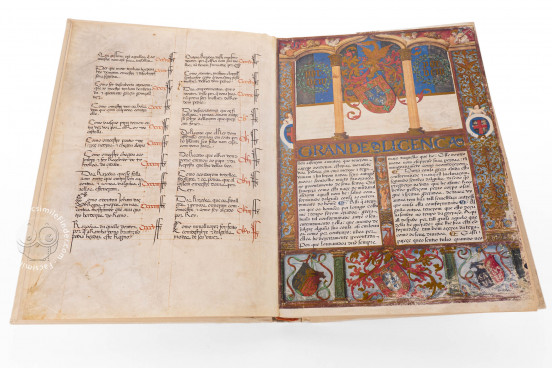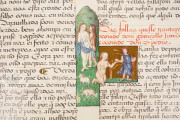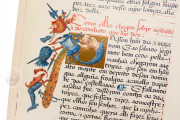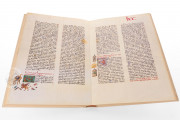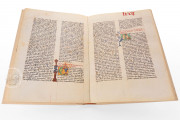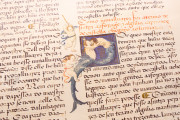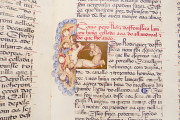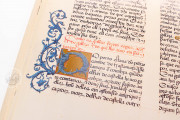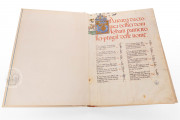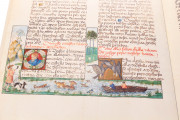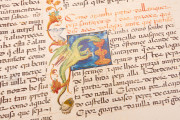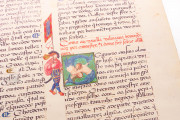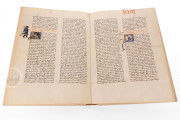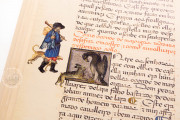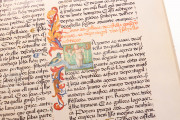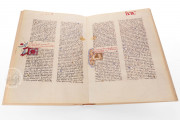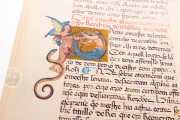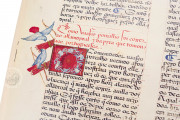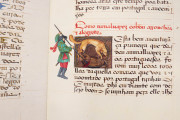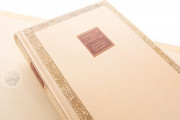The Chronicle of King John I by Fernão Lopes is a pivotal historical work detailing significant events in Portuguese history, particularly around 1383-1385. This period marks the transition from the Middle Ages to a transformative era. Written by Fernão Lopes, who was appointed by King Duarte in 1434, the chronicle captures the socio-political upheavals and the subsequent rise of King João I. Commissioned by Infante D. Pedro, the chronicle highlights the era's bold ventures, such as those led by Infante D. Henrique beyond Cape Bojador, which were crucial for expanding the known world and initiating Portugal's maritime dominance.
A Masterpiece of Renaissance Art
Manuscript Vit. 25-8, housed in the Biblioteca Nacional de España, contains the first part of this chronicle and is an exquisite example of a Renaissance illuminated manuscript, likely commissioned around 1530 by Infante D. Fernando. The manuscript combines literary and historical importance with artistic splendor, showcasing some of the finest miniatures of the 16th century and reflecting the exploratory spirit of Portugal’s Age of Discoveries.
Flemish Influence in Portugal: The Art and Prestige of the 15th and 16th Centuries
The manuscript is aesthetically tied to Flemish art, which was highly esteemed in Portugal during the 15th and 16th centuries. The Portuguese had the financial means to acquire Flemish tapestries, paintings, miniatures, and other high-quality objects in large quantities and to pay generously for the arrival of Northern artists in Portuguese cities. From the early 16th century, engravings, illustrations, and decorative prints by artists such as Albrecht Dürer, Lucas de Leyden, and Antwerp masters became widespread in Portugal, leaving a profound impact on local art and shaping future artistic trends.
The Artistic Hand Behind the Manuscript: António de Holanda’s Mastery Revealed
The attribution of the chronicle’s illumination is complex due to the lack of explicit references. However, it is known that António de Holanda worked for Infante D. Fernando, handling illumination commissions and other projects for clients connected to the court or religious institutions. While the exact birthdate of António de Holanda is unknown, it is estimated to be around 1480. He likely trained in the workshop of Alexander Bening in Bruges, which explains his later collaboration with Bening’s son, Simon. His art, seen in works like the Livro de Horas of D. Manuel, shows a clear influence of the Ghent-Bruges school.
A Hunting Scene Frozen in Time
Out of the manuscript’s 146 pages of text, only one stands out for its composition: page 41v. Here, the miniature covers the entire lower quarter of the page, leaving the two columns of text, which also feature illuminated vignettes. This scene depicts a hunt with a trumpeter on the riverbank, where a deer tries to escape from the mastiffs. On the opposite side, two hunters in a boat intercept the prey, with one of the dogs already gripping it. It is almost certain that António de Holanda is the artist responsible for this work. The vignettes and decorative borders are primarily Renaissance in style, though twenty pages still feature vegetal elements—such as waving foliage and flowers—that recall the old late-Gothic Ghent-Bruges style.
Heraldic Legacy: The Symbolism of Infante D. Fernando’s Arms
The manuscript was copied and illuminated by order of Infante D. Fernando, son of D. Manuel I and D. Maria of Castile. He was born in Abrantes on June 5, 1505, and died on November 7, 1534. His two sons had died shortly before, in August and October of that same year, and his wife, D. Guiomar Coutinho, Countess of Marialva, survived him by only a little. Fernando held titles including Duke of Guarda, Count of Marialva, Count of Loulé, Lord and Chief Alcaide of Lamego, Abrantes, and Trancoso, and Chief Steward of the Kingdom.
On the upper part of the manuscript’s cover, the arms of D. João I are displayed, while the bottom features the heraldic elements of the learned and unfortunate Infante. The center showcases his royal coat of arms of Portugal, with five blue shields arranged in a cross, each bearing five silver bezants, and a red border with seven gold castles. The lambel, or label, overlays the three upper castles. On the sides, two shields display the motto SALVS VITE (Salvation of Life) and a gold-winged serpent entwined around a rod, symbolizing salvation and divinity.
We have 1 facsimile edition of the manuscript "Chronicle of King John I": Crónicas de D. João I de Fernão Lopes facsimile edition, published by Ediclube, 1995
Request Info / Price
